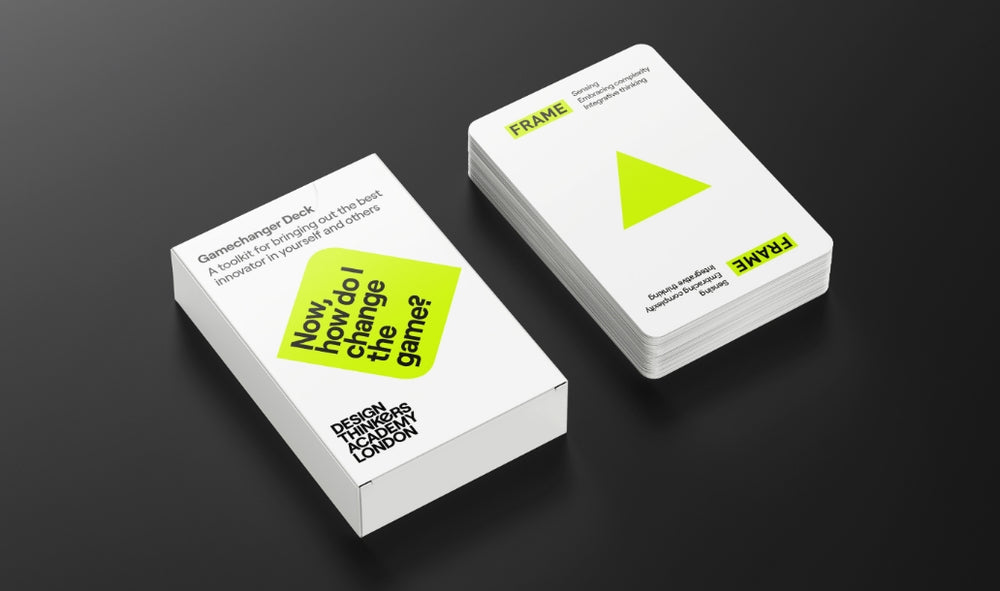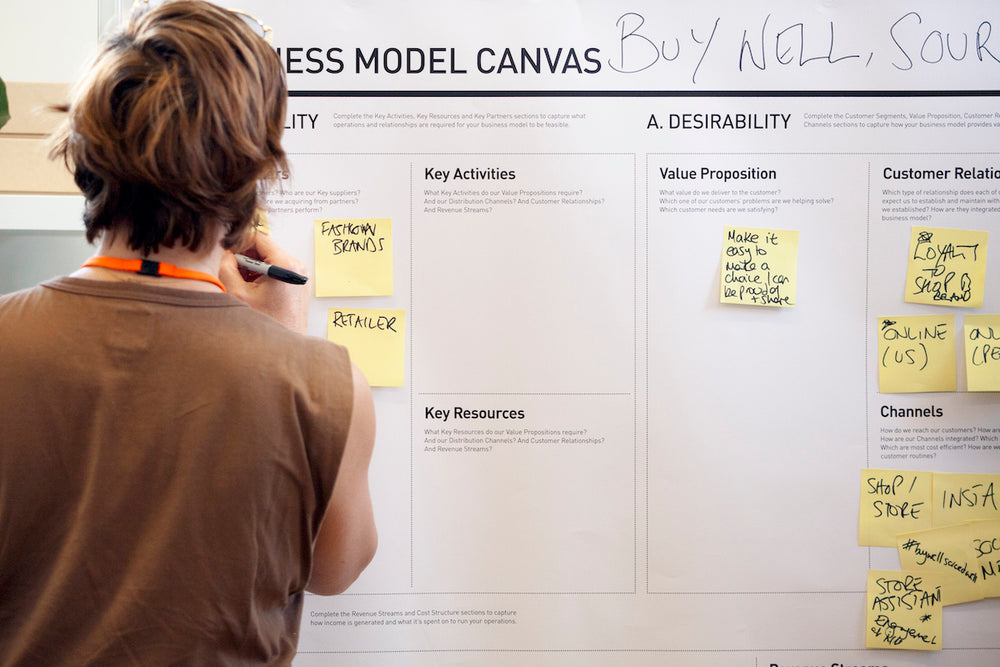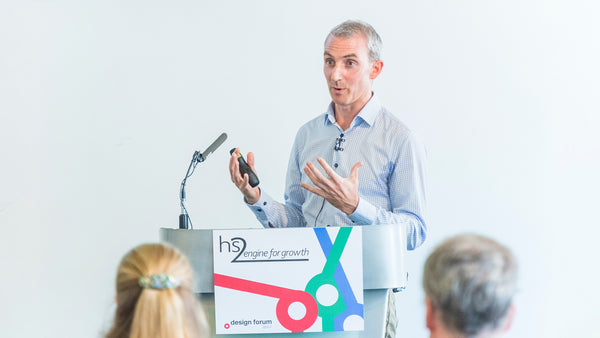A good leader must understand people, whether they are work colleagues, customers or other stakeholders. Design thinking makes use of tools borrowed from anthropology that can shed light on how different individuals and cultures behave, making it easier to collaborate and meet their needs. Ezri Carlebach explains.
Grokking
Everyone loves a good neologism – literally, a ‘new word’ – and every now and then one comes along that grips the popular imagination. For example, Brexit, although ugly, certainly caught on. Another example, much-loved by sci-fi fans, is less well-known today. ‘Grok’ was invented in 1961 by US science fiction writer Robert A. Heinlein, meaning “to establish a rapport,” or “understand (something) intuitively or by empathy”. To use the example given by Google, “corporate leaders seemed to grok this concept fairly quickly”. In a way, this weird word captures the importance to design thinking of empathy, and the ability to establish a rapport with others.
So how do you grok a situation or problem? Here’s where a key tool of design thinking, adapted from anthropology, comes into play. Ethnography is the systematic study of groups of people in their natural settings, and has been adopted by many disciplines for its value in helping to understand what others believe, how they behave, and what their needs might be in a given situation.
Designers have adopted ethnographic methods as a way of listening more effectively to product and service users, as detailed in Galen Cranz’s recent book Ethnography for Designers, in which she shows how ethnography “teaches one how to listen actively to the knowledge people have about their own culture.” (This is a feature of the Design Thinkers Bootcamp, which includes a masterclass session on observational techniques, including ethnography, with research guru Becky Rowe).
Hidden dimensions
However, it’s not just about listening during research with customers, but also how you interact with others in general, whether you’re leading a team through day-to-day tasks, trying to do something new, or solving a knotty problem. Actively listening with an open mind is equally applicable when speaking to colleagues and clients as it is when speaking to customers. As is asking for input from new people you haven’t spoken to before, visiting them in their own environment and context and trying to understand it. Otherwise you may not build the rapport or get the collaboration you need.
Among the pioneers of ethnography was Edward T. Hall, a contemporary of our friend Bucky Fuller, and one of his intellectual sparring partners. He was also a pioneer in understanding how language and culture interact to influence our thoughts and desires. Hall’s 1966 book The Hidden Dimension is notable for his insights into “the structure of experience as it is molded by culture.”
The boss needs to know
Hall contributed key concepts to the then emerging field of intercultural communication, writing books that aimed to help people from different cultures recognise the underlying attitudes and assumptions that can trip up the best of intentions, even when people share a language. Especially when it comes to doing business across cultures.
His ideas are still influential, even if the field of intercultural communication has moved on – a view confirmed by Barbara Gibson, who recently completed a doctorate in intercultural communication at Birkbeck College. “It’s moved on a lot from there,” says Gibson. “I think what you can take that’s really valuable are the dimensions they talk about when comparing different cultures, whether that’s national culture or any of the other layers of culture. What’s really moved on is the idea that you can peg a whole country based on very dated research and say, ‘all Germans are this’ or ‘all Americans are that.’”
Gibson’s own research looked at the intercultural competences needed by CEOs in modern multinational businesses, who have multicultural teams working in locations around the world. While some generalisations remain useful, particularly for marketing in different cultural contexts, the kind of inter-personal communication required between leaders and their teams – and within those teams – has to balance individual and cultural dimensions. “Interpersonal communication takes place one-to-one, so you’re not talking to the average, or a statistical collective. You’re talking to one person.” It’s a case of knowing when to characterise and when to personalise.

Bridging the gap
Gibson’s research identified specific competences that contemporary CEOs need, to cope with the complexities of global business leadership. “One of the key intercultural competences that I identified is what I call cultural sensory perception,” she says. “It’s an ability to sense when culture is in play, and then be able to make adjustments. So you can say, ‘oh, I’m highly adaptable,’ but if you don’t have that sense, that ability to spot cultural factors and see things from another’s point of view, then you won’t adapt.”
Public relations consultant Sally Maier-Yip knows how it feels to be on the receiving end of that lack of adaptability. Founder and principal of 11K Consulting, Maier-Yip works between the UK and China, helping UK companies enter the Chinese market, and vice versa. “A CEO from Hong Kong commissioned me to do media relations for her three-day visit to the UK,” she recalls, “but because she found the uncertainty of the way things are run here so difficult, she ended up micro-managing everything I did. It was very stressful!”
Maier-Yip’s work bridging the cultural divide means she has to understand exactly when to characterise and when to personalise in her communications. “Chinese clients are very different from Western clients. For Western clients, it’s a case of whether you have the right skills, what evidence you can provide about your previous work. For Chinese clients, the important thing is to know you as a person – who are you, more than what you do.” This emphasis on personal relations in Chinese business style makes recommendation more important than track record. “Whereas Western clients ask for pitches and want to evaluate your ideas, all my Chinese clients are recommendations from other Chinese clients.”
Despite this apparent preference for empathy over evidence, Maier-Yip says that design thinking is relatively unknown in China. “Design thinking is such an innovative Western approach,” she says. “There are Chinese delegations coming to the UK regularly with the aim of learning more about Western styles of innovation and problem-solving skills. I think Chinese companies would want to learn more about design thinking in future.”
Whether or not there will be growing interest in design thinking and ethnography in China, one thing is sure. As the need to understand and collaborate with increasingly diverse groups of employees, customers, and other stakeholders seems set to grow, perhaps what we all need is a little more grokkin’ all over the business world…










